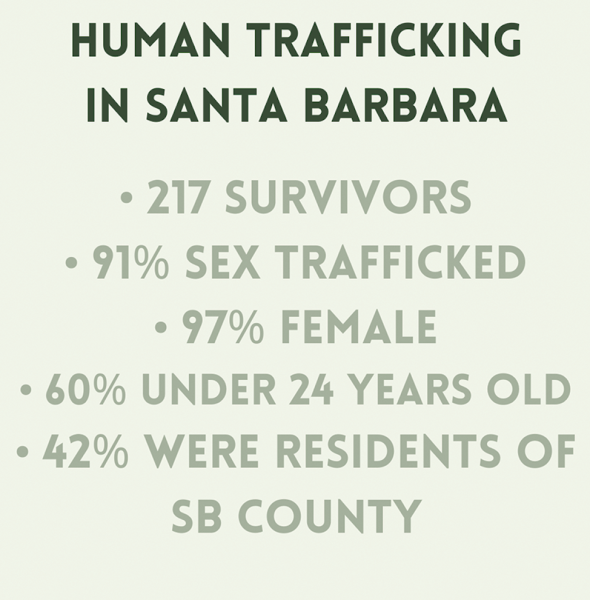THE CULTURE OF RAPE
As society normalizes rape culture, it creates an environment that disregards women’s rights and safety.
February 21, 2023
Oxford Languages defines rape culture as “a society or environment whose prevailing social attitudes have the effect of normalizing or trivializing sexual assault and abuse.” It is easy to witness specific examples of rape culture in our society and our school. We hear phrases such as “What were you wearing” from a young age; other phrases circulate around campus, like “Bag a Bitch,” defined as wanting to have sex with a girl solely because they think her body is attractive, but her face is ugly, so they want to put a “bag” over her head. Rape culture proposes that rape is widespread and accepted in American society and is an extreme example of pervasive societal sexism and misogyny.
Domination and objectification of women is the main contributor to rape culture. Surprisingly, this way of thinking can be seen clearly in modern music. Artists, male and female, rap or sing about objectifying themselves or another gender. In 2017, Billboard and Forbes named rap/hip-hop the dominant genre of music in the United States, taking the place of rock music.
Because of its popularity, this type of music reaches more young people than ever. The use of sexist and sexual themes expressed through modern music often shapes one’s behavior when these messages are portrayed throughout one’s youth. Songs frequently refer to women in a submissive manner by using terms like “hoe” and “bitch.” These phrases are used so frequently that we do not pause to consider how they are being utilized. Rap sometimes contains lyrics that demote women to mere objects or instruments to be exploited for sex rather than human beings. It also frequently contains lyrics that justify sexual or violent acts against women.
Objectified women are considered less than entirely human, less capable of making moral judgments, and less deserving of decent treatment by others. When someone is perceived as lacking moral standing and mental capacity, this perception has a detrimental impact on how they are treated. For instance, those who see others as having less moral fortitude are more likely to subject them to harm. Sexualized women are considered deficient in moral and mental competence, making them less capable, less human, and less believable when they come forward about their assault. This is a result of constant messaging from a young age that teaches many of us that an entire gender exists only to satisfy others’ needs.
Some of society’s seemingly harmless habits can teach children beliefs that contribute to rape culture. Parents frequently utilize the adage “boys will be boys” to defend their sons’ behavior, not only excusing irresponsible actions, but enforcing the patriarchal notions of what a man should be. Schools also have an impact—they hold girls accountable for how young boys perceive them by creating strict dress codes; labeling a girl’s outfit as “distracting” indicates that she is to blame if someone is bothered by it. This reinforces gender stereotypes and encourages victim-blaming and “slut-shaming.” It also implies that males cannot control their desires and cannot be held accountable for their actions. In their developmental years, children should be taught not to objectify women and be held accountable for their actions rather than be encouraged to sexualize women’s bodies. The rationale for rape and the idea that sexual violence against women is their responsibility is fostered by this environment.
The issue of rape culture in schools is pervasive and widespread, and schools fail to provide adequate sex education. The curriculum still does not fully understand the intricacies of consent and the role social media and technology play in creating rape culture. The social aspect of sex needs to be addressed first, and conversations about gray zones like pressure and power dynamics should be part of this. All efforts to educate students about sexual assault in schools should incorporate equality and consent. Consent entails being aware of and respecting one’s own boundaries and those of others. Learning about consent can result from better connections with friends, family, and, eventually, love partners.
Sexual assault affects every demographic and community, including the LGBTQ community. According to the Centers for Disease Control and Prevention, rates of sexual assault among lesbian, gay, and bisexual people are on par with or more significant than among heterosexual people (CDC). Due to their higher rates of marginalization, stigma, and poverty, LGBTQ individuals are more susceptible to sexual assault. Additionally, they encounter more instances of hate-related violence, which typically takes the form of sexual assault. Transgender persons and bisexual women experience the LGBTQ community’s most significant rates of sexual violence. In both communities, sexual assault often occurs at a young age.
A big part of rape culture is victim blaming. People can point the finger at a victim in order to separate themselves from a bad situation. They blame the victim’s circumstances or actions rather than face the fact that the victim had no choice in the matter, and that nobody is immune to assault. Others can make the victim appear different from themselves by labeling or blaming the victim. A survivor can be marginalized by victim-blaming beliefs, making it more challenging to come forward and report the abuse. Additionally, they might struggle to recognize themselves as sexual assault survivors. A victim will not feel safe coming forward if they believe that society is holding them responsible for the abuse.
Most people believe that rapists are motivated by sexual desire. Michael Kimmel explores the motivations of rape in “An Unnatural History of Rape.” Some rapes, in Kimmel’s words, “are the result of a combination of sexual desire, disrespect for women’s bodily integrity, and a feeling of sexual entitlement…[but] it’s not just about sex”. Sexual violence is committed by people who have a strong sense of entitlement and who are driven by a desire for dominance. Most offenders follow sexist preconceptions and social norms of masculinity and femininity. Social norms and culture impact sexual behavior by defining acceptable sexual relationships and influencing the repercussions of sexual expression. The fact that culture influences male aggression implies that rape is taught and, therefore, can be eradicated. We as a society should not accept this as the norm and we should work together to change our culture. Sexual assault education for both adults and children is necessary to help people build new habits and let go of stereotypes and biases.
As rape culture becomes normalized and ignored, it fosters an atmosphere that dismisses women’s protection and rights. Rape culture minimizes the seriousness of sexual violence and rationalizes sexual assault. The widespread excuse that aggressive and threatening men are just “assertive” needs to end. Commonly connected to rape culture are the use of misogynistic rhetoric, objectification of women’s bodies, and glamorization of sexual assault.
The culture we now live in is one in which sexist attitudes, beliefs, and actions are devalued and made to seem commonplace. We don’t realize the violent potential of these things being “normal,” and the fact that females frequently encounter sexism in their daily lives is disregarded. Sexual asault is now expected and accepted due to its normalization, which has to be contested.
The system must help women feel more comfortable speaking up; as we become more conscious of the way rape culture has grown in our society, we can hopefully work to help women feel safer.















